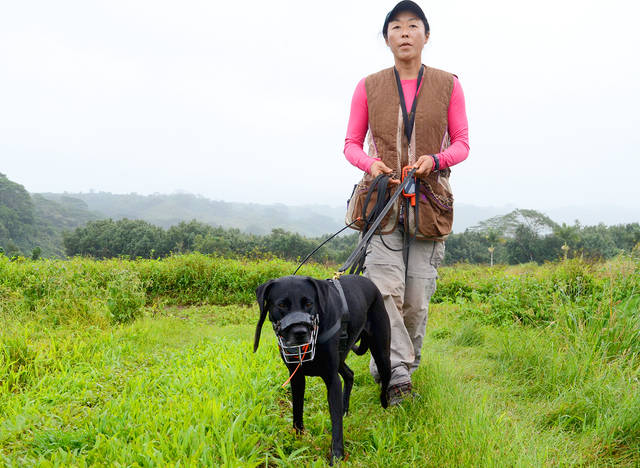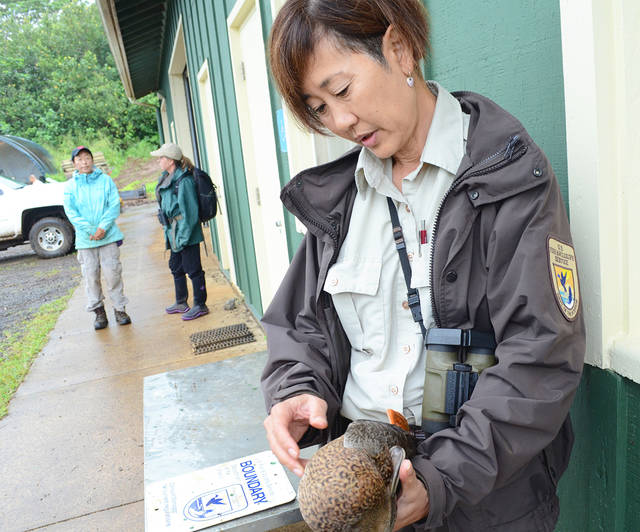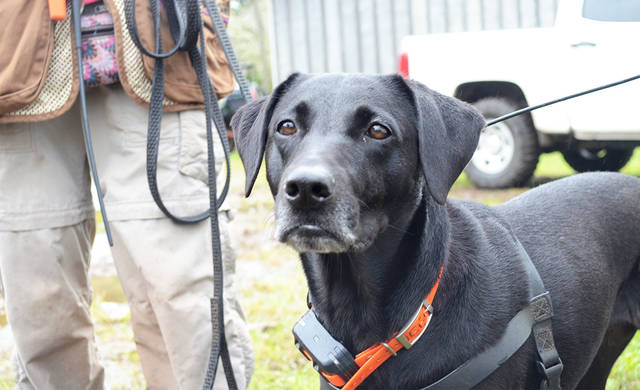KILAUEA — Walking through the taro fields at the Quick family farm in Hanalei, it’s nearly impossible to see the koloa ducks between the plants until they take flight.
It’s even more difficult to see the dead ones, and for staff members at the Hanalei National Wildlife Refuge, that’s a problem.
Avian botulism has been dropping ducks in outbreaks that have been sweeping the population since 2011 — and it’s not just koloa ducks.
Since December of that year, more than 1,200 dead or sick Hawaiian and migratory birds have died as a result of the paralytic disease, caused by ingestion of a toxin produced by a naturally-occurring bacteria.
“The birds get food poisoning,” said Michelle Reynolds, research wildlife biologist with the U.S. Geological Survey.
Once the birds ingest the toxin — through consuming contaminated vegetation or water — they become paralyzed and usually die due to respiratory failure or drowning from the inability to hold their head above water, according to the U.S. Fish and Wildlife Service.
Such was the case with a koloa duck found the morning of Dec. 20 in the refuge, which staff members said looked just like it was sleeping when it was discovered.
Within that week, it was the only carcass discovered. The week prior, staff members found seven. The goal is to find zero, Uyehara said, but if the dead ducks are out there, they need to be found.
“We want to get them out of the wetland before they become maggots because that’s how it spreads,” said Kim Uyehara, biologist for the Kauai National Wildlife Complex through USFWS.
And with the Hanalei National Wildlife Refuge being the hotspot for the disease within the state, stopping the spread in Hanalei will help stop the disease from breaking out statewide.
Rows of volunteers combing through taro fields within the refuge have been the major force for finding the dead birds and curbing the spread, but new tactics are being added to tackle the problem.
USFWS has started using another tool to find the dead birds — detector dogs.
It’s a joint project between USFWS and USGS Pacific Islands Ecosystems Research Center and it’s one of the first tests nationwide where odor-detecting canines are being used to find birds that died from avian botulism.
Six-year-old Bodhi and her handler Kyoko Johnson recently held a demonstration at Hanalei NWR to display the dog’s detection abilities and the routine they use to find the ducks human volunteers would usually be hunting.
That day was rainy, with low windspeeds — conditions that worked against Bodhi, Reynolds said — but the dog still found two fresh corpses hidden among four taro fields in under half an hour.
It was the third time Flora Quick, who farms taro in the refuge, has seen the dog search for avian botulism, and she was just as impressed as the first time she witnessed it.
“It was hard to believe in the beginning, but they can do,” she said, “Before it was so much volunteers walking in a line. This eliminates those steps and it didn’t damage the taro. I’m impressed.”
Bodhi is one of two detector dogs working at Hanalei NWR and two more are being trained to detect avian botulism for fieldwork with the dawn of the New Year.
Depending upon each dog, the length of their training will vary, Reynolds said. Bodhi, for example, was already a professional detector dog and she has been training on identifying the avian botulism odor since September.
“It’s the environment factors that present more of a challenge,” Reynolds said. “It’s having them focus and not get distracted by the live birds and the winds and the taro, that kind of thing.”
Their job is very specific — to find the source of the avian botulism scent and alert handlers so the dead birds can be gathered before the disease spreads. But, the dogs alert handlers to other dead things as well.
“A few days ago the other dog found a turtle stuck in a drain, things like that,” Reynolds said. “Then we can get those out of the fields, too.”
Within the refuge, botulism is concentrated in the makai taro fields, with fewer birds sick and dead in the southern, or mauka taro fields and the refuge’s wetland management units. Changes to the area’s water flow are being implemented, according to Jennifer Waipa, with the USFWS, including assistance in pipe installation in order to reduce the amount of time water is standing stagnant in the fields.
“We’re cycling fresh water through,” said Quick.
The disease has been found on Kauai, Oahu, Molokai, Maui and Hawaii Island, but recent outbreaks have been concentrated on Midway Atoll in the Northwest Hawaiian Islands and in Hanalei, according to USGS.
There is no season for avian botulism in Hawaii and currently in the Northwest Hawaiian Islands, it is killing the critically endangered Laysan ducks. On the Hanalei NWR, 89 percent of the birds affected are listed as federally endangered.
The koloa duck is the most affected by the outbreaks, and account for 64 percent of the total sick or dead botulism birds found at Hanalei NWR. The result is an average of about 140 koloa dead per year.
Resident endangered ‘alae ‘ula (Hawaiian common gallinule), ‘alae ke’oke’o (Hawaiian coot), ae’o (Hawaiian stilt), nene (Hawaiian goose), ‘auku’u (black-crowned night heron) and migratory waterbirds are also affected by the disease.
“It has the potential to spread to all the islands,” Reynolds said.













In Asia bird diseases spread to people.
Botulism is a deadly disease for people.
Tarô fields are for food humans eat.
Is there, or should there be any concern for human safety, whether for the farmers themselves or the eventual taro consumers?
The disease has been going on only since 2011 ?
Cause is mentioned as coming from natural occurring bacteria…but what and why are these naturally occurring bacteria showing up only since 2011 ?
Is there Mauka water contamination ?
Is this farm using chemicals that are causing these natural occurring bacteria to produce BOTULISM ?
There is an underlying cause, there maybe needs to be chemical, bacteria, poison, pollution, or mauka water detectives on the job.
Apparently what’s been, ain’t been enough as to discovery of cause.
Sounds like a good start in detection, but not a good enough finish.
Dogs are doing a good job of cleanup, but they are not good enough for PREVENTION…which leads to Healthhy ducks.
Mahalo
Charles